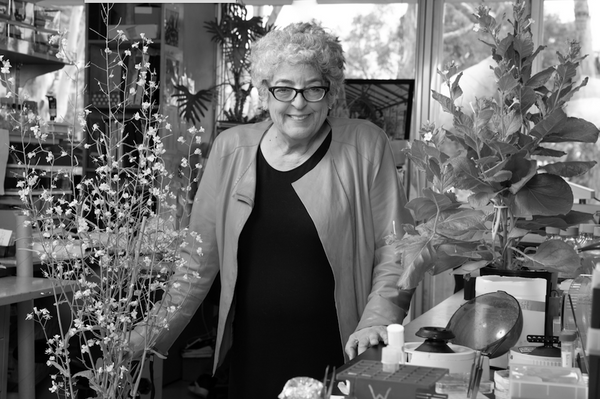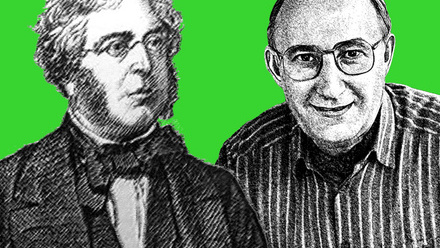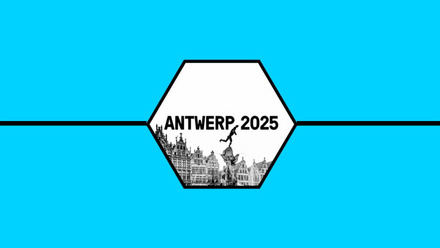In conversation with… Joanne Chory
“I’m excited that people are finally letting us remind them that plants exist and that they are here for a reason,” says Professor Joanne Chory, plant geneticist at the Plant Biology Group of the Salk Institute and Howard Hughes Medical Institute Investigator. Professor Chory is leading a new wave of carbon-sequestering science and I had the pleasure of discussing the research journey that took her from sunlight to soil.
Congratulations on being honoured with the Woolhouse Plenary Lecture at this year’s SEB AMM ! Where did your career as a plant geneticist begin?
I was a graduate student in microbiology working on bacteria, but when I was leaving graduate school, I wanted to really understand eukaryotic genetics. So, I visited six labs; three drosophila labs and three plant labs. Right away, I decided that the drosophila labs were way too competitive with some impressively smart people, so I visited the plant labs and picked the lab of Frederick M. Ausubel at Harvard Medical School because I really got along well with him. He was very proud of all his former students and where they had ended up, and I thought that it’s great that he’s talking about all that stuff. It felt like he would be a good mentor. When I started with the plant lab, I was a little naïve, I think, but I really thought that I could make a real difference in this field, so I went to Fred’s lab and said “I want to work on signal transduction in plants”. This is in the early 1980s when a lot of receptors were being discovered and so he said, “ok, tell me what that’s all about”. At the time, only one receptor was known in plants, it was a phytochrome, which is a photoreceptor that detects red light, but we also knew of a few genes linked with light response. I felt like I had the beginning and end of this pathway from genes to receptors, and it was the only signalling pathway known in plants, so I knew I had to work on this!
What came next for you and your research?
In 1987, I took a job at the Salk Institute. I remember that at my job interview I was so cocky that I said, “all you need to do is a really big mutant screen and you’ll find all the elements of this pathway.” Twenty years later, we emerged with the whole pathway, from the excitation of a single photon in the photoreceptor all the way to changes in plant architecture! In the meantime, we had to learn how plants made auxins (major growth hormones), so we ended up isolating mutants that couldn’t make auxin and we realised that this was this was the trigger of the whole shade avoidance response. When a plant is in competition with another plant, that’s the worst kind of competition because they’re both fighting for light, and to win, they have to grow upwards—which requires auxin. It sends it from the shoot into the primary stem, which then grows. And it was actually a lot more complicated than we first thought it would be!
Your research has more recently been focused on carbon-reducing plants, is that right?
About 5 years ago, I realised that my research would teach us a lot about how plants respond to light, but it wasn’t really the most relevant question that could involve plants. In 2016, we got a new president at Salk, Elizabeth Blackburn, and she challenged us all to think bigger than our own labs and focus on the big problems. The plant group took this pretty seriously and we all got together and came up with the idea that I discussed in my SEB Woolhouse Lecture, how we could use plants to draw down CO2 from the atmosphere. We have a real urgency to do something because what we’re experiencing right now in terms of climate change is pretty chaotic, from uncontrollable fires to tropical storms, but I still believe that we can make a difference. It was kind of an audacious idea, but that did help us to win one of the TED Audacious Project awards,1 which gave us $35 million to get the project off the ground. That was a big deal and drew a lot of attention to my TED Talk,2 which was also pretty good! After this, we were one of the first recipients of Jeff Bezos’s Earth Fund and received another $30 million. Now that we had a lot of money, we had to show that we could provide results.
Wow! So, it sounds like there was a big push to get plant genetics applied into reducing atmospheric carbon?
Yeah, it was kind of interesting. Early on, we had only been studying the above-ground part of the plant and hadn’t been too concerned with the roots, so we kind of ignored them… but now we had to get really into roots because they are a very important part of this carbon sequestration response. I believe that the soil has a much higher capacity for storing CO2 than it is doing right now, and we know that soils used to be way richer than they are today. Our idea was that maybe we could speed this process up if we made plants with more roots, deeper roots, and bigger roots. We also wanted to make this more recalcitrant carbon in the form of suberin, which is a big aliphatic molecule with a super cool structure and a long carbon chain in the middle. Suberin doesn’t have oxygen in the central structure, which makes it less appealing for microbes to decompose and makes it a really good candidate for more recalcitrant carbon storage.

Looking back on your career, are there any highlights that you’d like to share?
Yes, certainly. There was a time when every paper we wrote got into a big journal, which was very exciting and we were prone to regularly getting big “WOW!” answers. I remember one time when we were trying to figure out the light signalling pathway, we had a class of mutants that looked like light-grown plants, even when grown in the dark. It turned out that they were mutant for brassinolide steroids, which are hormones involved in cell growth. We sent a genetic sequence to the Basic Local Alignment Search Tool (BLAST) and our lab was sitting there, all seven of us, and it came back saying “steroid 5alpha-reductase” and we all went “well, what is that?!”. That was an exciting moment for us because it linked our work to this whole new field of brassinolide steroids and for the next 5 years, we really killed it with that pathway. That was lots of fun, we had lots of “WAHOO!” moments and you don’t get too many of those in science.
Now looking to the future, is there anything that you’re excited about?
Sure, I’m excited that people are finally letting us remind them that plants exist and that they are here for a reason. To me, that’s a really big breakthrough. We’re getting people to listen to us and understand that photosynthesis is a meaningful process and that we need it in order to have an atmosphere that we can live in. I want to convince people that plants are our silent partners and they bring beauty to our lives. If we could make every plant purchased into a carbon sequestering plant, that would be a great start. I do talks at gardening clubs and they’re all super into it and want to help, so I’m looking forward to making more breakthroughs like that!
Thank you for taking the time to talk with me! One final question, do you have any advice for young SEB members?
Own your projects. I was never truly excited about science until I had the opportunity to take control of my own project. I first got really excited during my microbial genetics course in college, when I got to build my own experimental Winogradsky columns. These were long clear glass tubes of soil which had lower concentrations of oxygen the further down you went, creating habitats for different microbes with a variety of pigments, which would make these columns look so beautiful. My advice is that if something excites you, just let it!
References
1. The TED Audacious Project Awards. https://audaciousproject.org/ideas/2019/salk-institute-for-biological-studies
2. TED Talk: How Supercharged Plants Could Slow Climate Change – Joanne Chory https://www.youtube.com/watch?v=pyFcr2WcOyo




